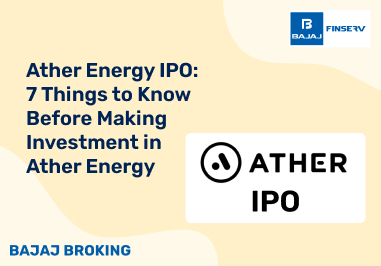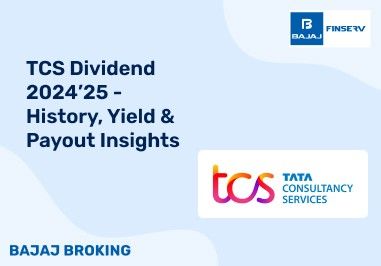When a salaried individual makes a voluntary contribution to his employee provident fund (EPF) account, it is known as a voluntary provident fund (VPF) contribution. Under the law, an employee and his employer (provided he employs 20 or more individuals) are supposed to make a contribution to his EPF account to create a fund for his retirement. In addition, an employee can choose the VPF route to make voluntary contributions to his EPF account to create a bigger corpus for his retirement. Read this blog, as it throws light on all important aspects related to voluntary provident fund.
What is a Voluntary Provident Fund?
A Voluntary Provident Fund (VPF) is a voluntary or non-compulsory contribution made by a salaried employee to his EPF account. The important words here are “voluntary” and “non-compulsory,” which means employees are not under any obligation to make such contributions.
Instead, they make them on their own. An employee makes a VPF contribution over and above his EPF contribution, which is 12% of his basic salary and dearness allowance (DA). But, why would an employee make a voluntary contribution to his EPF account?
One of the most important aspects of a VPF investment is that it is backed by the Government. Therefore, it is a low-risk investment and it provides relatively high returns.
While salaried employees can make voluntary contributions to their EPF accounts, their employers are not required to contribute to their VPF accounts. Employees earn the same interest rate on their VPF contributions as they earn on their EPF contributions. Now that you know VPF’s full form and its meaning, let us move deeper into this topic.
Additional Read: VPF vs. EPF vs. FD
Eligibility to Invest in Voluntary Provident Fund
A salaried person can make voluntary provident fund contributions to his existing EPF account. Hence, to invest in VPF, an EPF account is mandatory. Moreover, under the law, only those organisations that employ 20 or more employees should open EPF accounts for their employees.
Hence, a salaried individual has to work in an EPF-recognised organisation to make VPF investments. Meanwhile, an organisation that employs less than 20 individuals can also open an EPF account for them. However, it is the organisation that has to take such a decision, not its employees.
Advantages of Voluntary Provident Fund
The most important VPF benefits are explained below:
Tax benefits: VPF investments are ideal from a tax viewpoint. An individual’s contribution, interest earned, and principal/maturity amount on such an investment are exempt from tax. However, interest earned by an employee on his VPF contributions in excess of ₹ 2.5 lakh in a financial year is taxable.
Government backing: VPF investments are backed by the Government and hence are considered risk-free compared to investments in a private company. Therefore, VPF investments suit risk-averse investors.
Relatively high interest: Currently, investors get interest at 8.15% per year on their VPF contributions. Besides, they can claim a tax deduction for contributions up to ₹ 1.5 lakh per year. Moreover, interest earned on contributions up to ₹ 2.5 lakh per year is also exempt from tax. Hence, post-tax returns on VPF are higher than those on many other fixed-interest investments.
Convenient mode of investment: It is extremely easy to start contributing to a VPF account. All an employee has to do is approach his human resources or finance team and ask them to raise a request stating that he would like to make contributions to his VPF account. His already existing EPF account will serve as his additional VPF account.
Having learnt the benefits of VPF investments, let us delve deeper into this topic.
Additional Read: EPFO Scheme Benefits
Key Characteristics of Voluntary Provident Fund
The main features of voluntary provident fund are explained below:
1. VPF Tax Benefits: Investors get tax exemptions on various aspects of VPF contributions. Their yearly contribution to their VPF account is exempt from tax up to ₹ 1.5 lakh. The interest they earn on their yearly contributions up to ₹ 2.5 lakh is also exempt from tax. Besides, the principal and maturity amount on VPF are exempt from tax.
2. Contribution to VPF: Salaried employees make VPF contributions to their existing EPF account. While they can contribute 100% of their income as a voluntary contribution, their employers are not supposed to make any contribution to their EPF account more than the required amount.
3. Interest Rates for VPF: The current applicable interest rate is 8.15% per year on VPF contributions. However, if you contribute more than ₹ 2.5 lakh to your VPF account, then interest earned on up to ₹ 2.5 lakh contribution is exempt from tax; but, interest earned on more than ₹ 2.5 lakh contribution is taxable.
4. Eligibility Criteria: To make VPF contributions, an individual has to be employed in an organisation that is required to open an EPF account for its employees. This is because VPF contributions are made to the EPF account of an employee. As per the rules, only those organisations that employ 20 or more employees have to open an EPF account for them. An individual, who is employed by an organisation that is not required to open an EPF account for its employees, cannot make VPF contributions unless the organisation voluntarily decides to open an EPF account for its employees.
5. VPF Withdrawal Facilities: VPF investments have a lock-in period of 5 years. If you decide to withdraw your VPF investments before the completion of 5 years, you may lose tax benefits. That said, you can withdraw your balance in an EPF account (including VPF balance) when you retire or resign from your job.
6. Maturity Period: While making VPF contributions, you need to keep in mind that such investments have a lock-in period of 5 years. In other words, if you want to avail all tax benefits on VPF investments, you will have to stay invested for a minimum of 5 years. However, you can make partial withdrawals as loans or even complete withdrawals. But, you will have to pay tax on the accumulated maturity amount if you withdraw before the end of 5 years.
7. Creating a Voluntary Provident Fund: It is very easy to start making VPF contributions. An employee has to give it in writing to his organisation’s HR/finance team that he would like to make additional contributions to his EPF account. For this purpose, he needs to fill out something called a “VPF Application Form.” An employee also has to mention how much extra amount he would like to get deducted as VPF contribution from his monthly salary.
How to Open a voluntary provident fund (VPF) Account?
The first thing an individual has to do is request his organisation’s finance or HR team in writing to open a voluntary provident fund account. In his request, he will also have to mention the additional amount he wants to get deducted from his monthly salary as his VPF contribution. Salaried employees can open a voluntary provident fund account at any time in a financial year. However, VPF investments have a lock-in period of 5 years, which means if an employee withdraws his VPF balance before five years, he may have to pay tax on it.
How to Check Voluntary Provident Fund (VPF) Balance?
You need to follow these steps to check your VPF balance:
· Visit EPFO’s official website.
· You need to click on “Our Services” on the website and then select “For Employees.”
· Then, under “Services,” you should select “Member Passbook.”
· Provide your UAN and password. Then, click on “Login.”
· Now, you need to choose the Member ID and click on “View Passbook.”
· You must check your EPF Passbook for all the details of your Voluntary Provident Fund (VPF) account.
EPF vs VPF vs NPS
The following table will help you compare Employee Provident Fund (EPF) with Voluntary Provident Fund (VPF) and National Pension System (NPS).
Criteria
| EPF
| VPF
| NPS
|
Eligibility
| All salaried individuals can open an EPF account.
| All salaried individuals with an EPF account can make VPF contributions.
| All Indian citizens, whether they are residents or non-residents, can open an NPS account provided they are 18-60 years of age.
|
Objective
| To help employees create a retirement corpus by making it necessary for them and their employers to contribute to their EPF account.
| To allow salaried individuals to make contributions for their retirement in excess of what is mandatory for their EPF.
| To provide a market-linked pension scheme to a wide variety of people which can make them contribute to an account while they are working so that they can get regular pension post-retirement.
|
Employee Contribution
| 12% of basic salary + DA
| Up to 100% of basic salary + DA
| 10% of basic salary + DA
|
Employer Contribution
| 12% of basic salary + DA
| An employer is not required to make any contribution towards his employees’ VPF.
| Private companies have the option to contribute to their employees’ NPS accounts.
|
Tax treatment
| Tax deductions available on annual contributions up to ₹1.5 lakh under Section 80C
| Tax deductions available on annual contributions up to ₹1.5 lakh under Section 80C
| Tax deductions are available up to ₹1.5 lakh under Section 80CCE, and ₹50,000 under 80CCD(1B) and 80CCD(2) with a limit of up to ₹7.5 lakh
|













